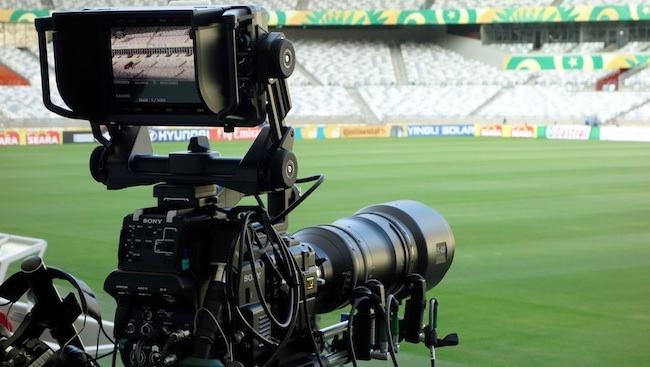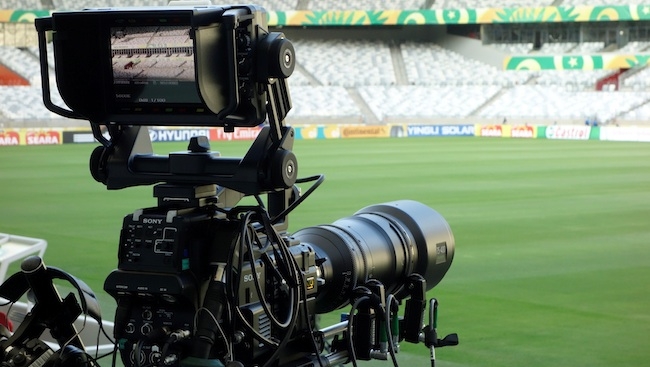
 A Sony F55 ready for Confederation Cup action
A Sony F55 ready for Confederation Cup action
With BSkyB’s successful Ultra HD broadcast – albeit to a small, select audience - of an EPL match now under the broadcaster’s belt, a line has been drawn under the intercontinental programme of Ultra HD sports testing that has been undertaken over the summer months. So, what have we learned, what work remains to be done, and where does that leave 4K to the home?
-
First, it was a busy summer. While tests at the Wimbledon Tennis Championships focussed on shutter speeds, camera angles and colorimetry, over the course of three Confederations Cup matches in Belo Horizonte in Brazil, work was undertaken to see how well a mixed 4K/uprezzed HD workflow would pan out. Reports coming out of Latin America suggest that there were lots of improvements made, especially in being able to attach existing broadcast lenses to the Sony F55s (useful for shaving costs – 4K glass is expensive) and keeping focus. The fact that the West Ham vs Stoke City was shot using only 4x cameras, however, suggests that the mixed format production was less successful.
-
There are technical issues that remain to be addressed. Sport producers have been busy on the Conference circuit voicing disquiet about framerates (interestingly, the Sky Sports test was shot at 50fps) and the shallow depth of field that the large single-sensor cameras that dominate the 4K market produce. There is also the question of how quickly you can boost the wireless camera and ultra slo-mo technologies that modern sports OB relies upon up and into the 4K space.
-
There are also editorial questions being floated, with some questioning whether 4K broadcasts can replicate the fast-cut techniques of HD, or should instead follow the more languid, visually-rich style of stereo 3D (or IMAX, for a possibly more appropriate comparison).
-
Which feeds into the highly pragmatic consideration that this stuff a) still costs and b) is still challenging to do. The EPL test transmission was shot using four UHD cameras and two servers, as opposed to the normal 20+ that Sky will throw at a game. Will viewers sacrifice breadth and detail of coverage for detail of a pixel sort?
-
Getting it into the home still is an issue. The test transmission fed four synchronised HD feeds over a Eutelsat satellite to Sky’s HQ in Isleworth, where it was reassembled as four Full HD tiles and shown on a Sony 84in UHD TV. Yes, BSkyB is well-placed to be one of the first in the world to offer a UHD service (though personally my money is on sister company Sky Deutschland to beat it to the punch, watch for an announcement at IBC), but there’s work to be done on the HEVC front to make that happen yet.
-
Timing remains an issue. Pay-TV channels will drive UHD, of that there is no doubt, but the landmark sports events that tend to drive uptake of new technology – the FIFA World Cup and the Olympics essentially – tend to be the rights properties of national broadcasters. Can a UHD pipeline be pioneered elsewhere and then put in place for them by 2014 and 2016 respectively? Even Sky MD, Barney Francis, is hedging his bets: “While we continue our research and development, we are also keeping a close eye on how the wider market for UHD develops, particularly in relation to how quickly UHD TVs begin to enter UK homes,” he wrote in a blog post. “And as and when affordable UHD TVs are available, over the next few years, our early leadership will position us well.”
Tags: Studio & Broadcast


Comments